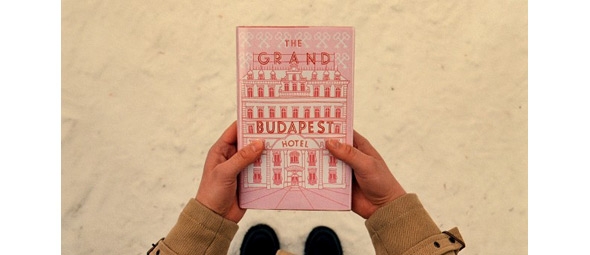The Grand Budapest Hotel
Directed by Wes Anderson
Written by Wes Anderson
Inspired by Stefan Zweig
Starring every major actor who has ever appeared in a Wes Anderson film
I just got home from watching The Grand Budapest Hotel and I will admit without hesitation, I enjoyed this film more than any other film I have seen in a very long time. This is one of the few films in recent memory where I actually wanted more time with the characters. I was not wondering what the time was, or fidgeting in my seat. I was absorbed by what was happening in this film.
The film looks beautiful and Wes Anderson seamlessly blends models and miniatures with stop motion and digital effects. The aspect ratio was unusual in that within each story, the aspect ratio changes. For the most part the film is set in in 1932 and screened in the 1.37:1 aspect ratio, as this was the Academy Standard in 1932 while the scenes with the narrator set in the 1970s are in 2.35:1, which was the standard aspect ratio of that time and the girl in a more contemporary setting, reading the book about the narrator telling the story is in 1.78:1 which is the standard aspect ratio today. This may sound strange, and it is, oddly enough it works brilliantly as we are drawn into the world of Gustav H. through a story within a story, within a story. What this brings is an incredible sense of depth through a wide-angle lens while omitting widescreen.
This appears as a fantastical world of Wes Anderson, yet there is perhaps more pathos than audiences are accustomed to in these films. The emotional core of this film was both funny and tragic while also functioning as an allegory of pre WW2 Europe through the gradual loss of pride and violence seeping through the aesthetics.
Moonrise Kingdom (2012) had on-screen violence, in stabbing a boy and Snoopy (the dog) being impaled. The Grand Budapest Hotel takes the violence to a new level. Yes, there is blood in this film and despite some of the criticisms of Wes Anderson films being too cute, his films are more adult than they have ever been. Where Moonrise Kingdom dealt with the pain of growing up, the onscreen violence felt unnecessary but may be clearer on a second viewing. The Grand Budapest Hotel appears more interested in the pain of isolation, disconnection, totalitarian occupations and love lost. While the violence mentioned may sound out-of-place in these films, one of the running themes of the film was the need to maintain one’s humanity in a savage world. So when the film aesthetically looks like a fairy tale, the content is deceptively dark and in many ways brilliant. So there is a lot to take in, which is why I recommend this film very highly. as an intelligent film that is engaging on multiple levels.
Posted on April 23, 2014, in Film Reviews and tagged Aspect Ratio, dehumanization, Depression, Existentialism, Grand Budapest Hotel, literature, pathos, society, Wes Anderson, women, WW2. Bookmark the permalink. 1 Comment.





I agree! I laughed aloud throughout and Ralph Fiennes’ timing and delivery was perfect!
LikeLike